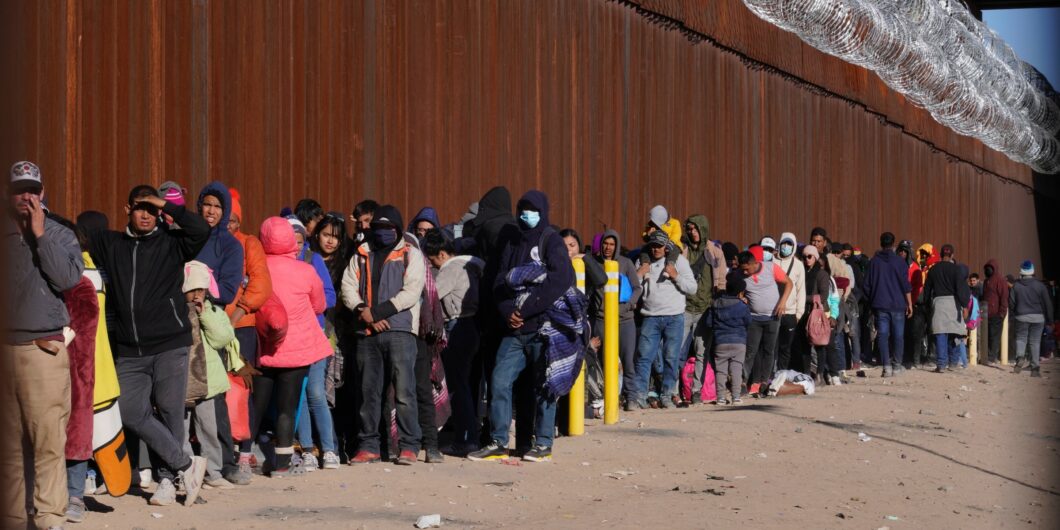The Future of Immigration Politics
It seems insufficient to describe the 2020 presidential contest as the most unusual election cycle in recent memory. Indeed, almost any superlative seems to fall short. Between Covid and Covid-related lockdowns, an economic contraction, Black Lives Matter protests, supposed irregularities in counting the vote, and, of course, the madness of January 6, that election and its immediate aftermath will forever be remembered as an especially interesting (and concerning) moment in US history.
With so much news coming at the electorate during a period of extraordinary partisan rancor, we might be forgiven for failing to notice that one policy issue was curiously absent: immigration. Indeed, the signature issue of Trump’s 2016 presidential campaign was scarcely mentioned at all, by either side. It barely came up in the debates. To the extent the Trump team discussed the issue, it was usually part of a larger broadside against the radical left, which, to many observers, had become increasingly lawless.
When Trump was defeated, a few commentators on the right, especially immigration hawks who were excited about his candidacy in 2015 specifically because of his attacks on immigrants, felt vindicated. After all, a Republican won the presidency by campaigning against illegal immigration, but he lost when he failed to build the wall and largely dropped the immigration issue. The apparent lesson for future candidates was that they needed to revive the 2015–16 Trump campaign playbook.
At the time of President Biden’s victory, I thought this narrative contained some truth. It seemed plausible to me that the immigration issue motivates a significant contingent of voters. I no longer think so. Political developments over the last several years have prompted me to rethink the political consequences of immigration debates. Even more than current events and election returns, a new book, Immigration in the Court of Public Opinion, by political scientists Jack Citrin, Morris Levy, and Matthew Wright, has persuaded me that, from a political standpoint, Trump was right to back away from his aggressive anti-immigration stance when standing for reelection.
Immigration restrictionists long argued, accurately, that public opinion was on their side. Whether it should be is a different issue. Economist Bryan Caplan, for instance, argues that the public’s opposition to a more open immigration policy is compelling proof that the typical voter is irrational. Rational or not, it is true that, historically, if policy followed opinion, immigration rates to the US would have been much lower than they were. The large-scale immigration that has been ongoing since the 1960s did not begin because the public demanded an end to the restrictionist policies that had been in place since the 1920s. Appeals to the people’s will has always been a hallmark of immigration opponents, and it has been one of their more compelling arguments.
The nativist appeal to democracy has two potential problems. The first is simply that popularity is no marker of good policy. If policies should be pursued only if they are popular, any party would need to scrap a considerable part of its agenda. From the perspective of a Burkean conservative, statesmanship requires following your own judgment, not chasing the fickle masses. Politicians who openly stand on principle against public opinion deserve respect, even when one disagrees with their position.
Commitment to high-minded principles when it comes to political rhetoric is probably too much to ask, however, so we should expect and accept some inconsistency. Unfortunately for immigration restrictionists, appeals to democracy and popularity now have a much greater problem: the public is increasingly not on their side.
According to Citrin, Levy, and Wright, “nativism, negativity, and polarization do not describe how the majority of Americans think about immigration.” They acknowledge that there is a contingent of nativist voters in the US, but “the most accurate portrait of the public’s views, we show, is one of ambivalence and complexity with a generally positive hue.” With their thorough and convincing tour of the relevant data, the authors show that Americans are not divided between a pro-immigration and an anti-immigration camp. Very few Americans are uniformly against all immigration or in favor of anything resembling open borders, the truth is that most Americans “endorse a mix of some policies that would increase immigration or expand immigrant rights and others that would reduce them.”
The authors correctly point out that partisanship is the greatest dividing line in the electorate when it comes to immigration attitudes. Republicans are more skeptical of immigration than Democrats, but they are considerably less nativist than much of the overheated rhetoric on the subject suggests. When presented with seventeen questions about immigration, less than one percent of Republicans expressed across-the-board hostility to immigration, and more than three-fifths endorsed the anti-immigration position less than half the time.
Following Trump’s election, we witnessed much progressive handwringing about rising xenophobia in the US. It was also easy throughout that period to find smug Europeans reveling in their greater levels of tolerance, cosmopolitanism, and humanitarianism. However, even during Trump’s presidency, the average American was far more accepting of immigration than the typical European. This remains true today.
Readers in favor of tighter immigration controls may find this book demoralizing, but the authors also give them reasons for optimism. Aggressive nativism is not popular, but neither is left-wing multiculturalism. Most Americans are willing to accept a generous immigration policy, but they do expect immigrants to work, learn English, and generally assimilate into the national culture. Efforts to safeguard immigrant cultures, especially via government programs, are political non-starters. Most Americans oppose sanctuary cities. They also recognize that a loud contingent of the left will fight literally any effort to enforce immigration law, pushing for de facto open borders, and they reject this vision. Americans do not want immigration to stop, but they do want it orderly.
Although racism, xenophobia, and the desire to safeguard certain jobs are real issues, Republican fears of immigration are also driven by partisan concerns.
The authors also show that, contrary to more alarmist claims by Samuel Huntington and other critics of large-scale immigration from Latin America, Hispanic immigrants are assimilating at a reasonable pace. The restrictionist argument that large numbers of immigrants from Mexico secretly harbor revanchist fantasies of undoing the Treaty of Guadalupe Hidalgo is preposterous. The children and grandchildren of immigrants, while not politically or culturally indistinguishable from Americans without close immigrant relatives, do develop strong American identities. This is especially true for the third generation.
The book is relatively short, and for the most part, this is a strength. The authors do not bother with an extended literature review bringing readers up to speed on hundreds of studies, nor do they use the kinds of sophisticated statistical models that baffle non-experts. I was bothered by a few omissions, however. I especially wish the authors had discussed in greater detail the partisan breakdown of different immigrant groups and their descendants.
I have argued that, although racism, xenophobia, and the desire to safeguard certain jobs are real issues, Republican fears of immigration are also driven by partisan concerns. That is, Republicans worry that immigration will eventually lead to a permanent Democratic majority. Citrin, Levy, and Wright do find that immigrants are not the main promoters of “wokeness”—that ideology is pushed most aggressively by native-born white Democrats—and majorities of every racial and ethnic group reject race-based affirmative action, at least in the surveys they highlight. These are important findings and attitudes about issues matter, but party identification arguably has a larger effect on what kinds of policies are implemented.
In my own examination of the subject, I found that immigrants are more likely than native-born to support the Democratic Party, even after controlling for many other factors. The children and grandchildren of immigrants are also more likely to be Democrats, though this dissipates with each generation. Many Republicans, perhaps understandably, fear that unchecked immigration will cause an increasing number of states to follow California’s example, becoming unbreachable Democratic citadels. In a time of high partisan polarization, fear of an overwhelming, indefinite Democratic majority scares the typical Republican far more than having a few Hispanic neighbors.
One can argue, of course, that Republicans might perform better among immigrants if they spent less time attacking immigration. This argument seems plausible enough, but it suggests that immigrants and their children vote Democratic because they are single-issue immigration voters. I am not sure this is true. I have not, for example, seen any evidence that Republicans earned any electoral dividends for their support for the 1986 legislation offering amnesty for undocumented immigrants. On the other hand, Florida’s shift into a red-leaning state and the GOP’s continued strength in Texas, seem to indicate that Republicans can continue to thrive in places with sizable Hispanic populations, despite hardline immigration positions.
The argument that Trump’s victory in 2016 can be primarily explained by his immigration positions has discernable problems, even if you do not trust survey data on this issue. Republicans have sought the presidency as single-issue, anti-immigration candidates before. None came close to winning the White House before Trump. Who today remembers Tom Tancredo? If immigration was key to Trump’s victory, we must explain why candidates making comparable arguments failed to gain traction.
Although the immigration question attracts a lot of radicals making loud demands, major change in any direction is unlikely. There are simply too many veto points along the way for Congress to pass and implement sweeping overhauls. At present, pro- and anti-immigration activists can only hope for minor, incremental victories. Despite widespread agreement that America’s immigration system is “broken,” small changes at the margins may bring us closer to the public’s actual wishes than the grandiose goals promoted by activists on either side of the debate.


